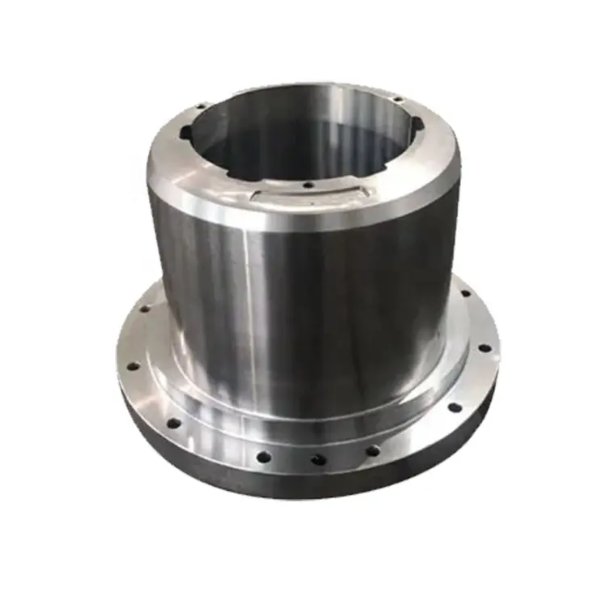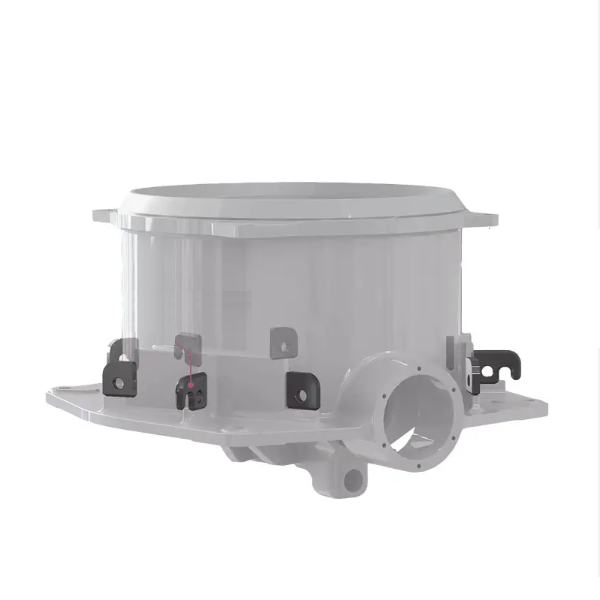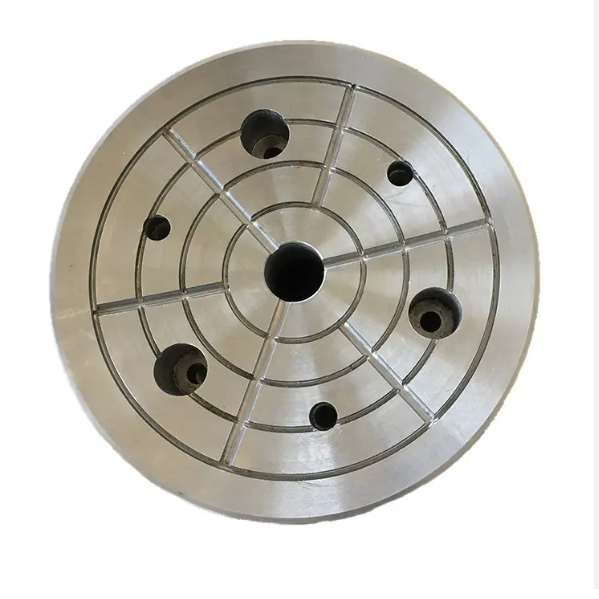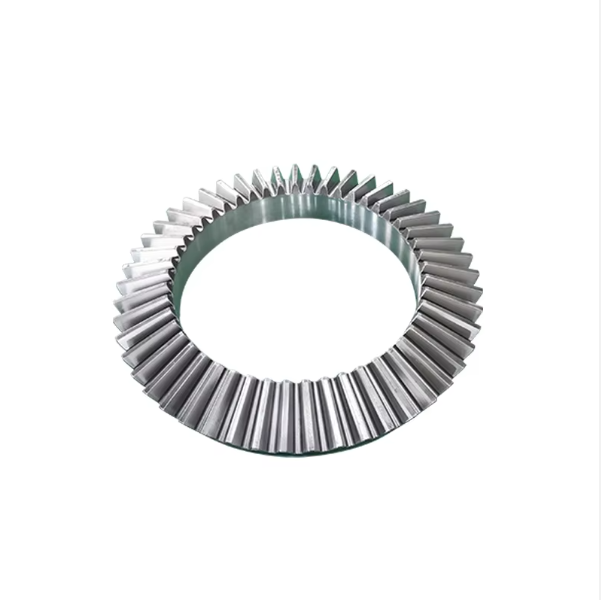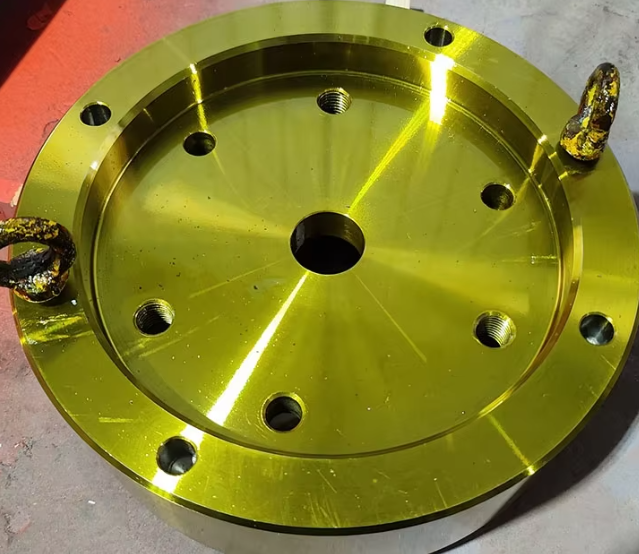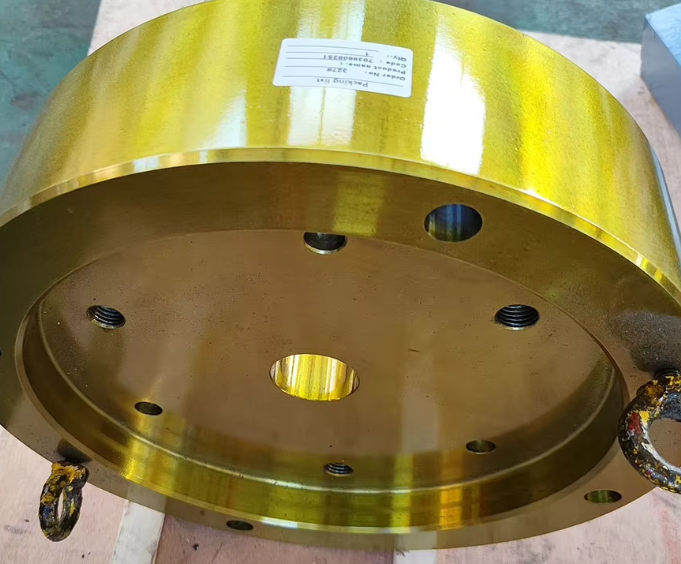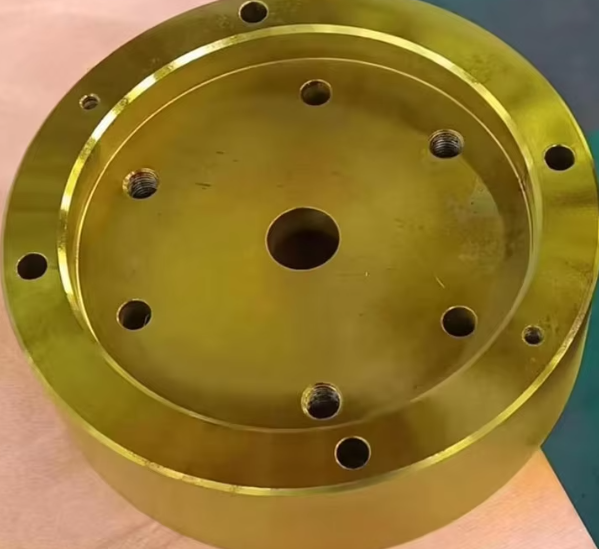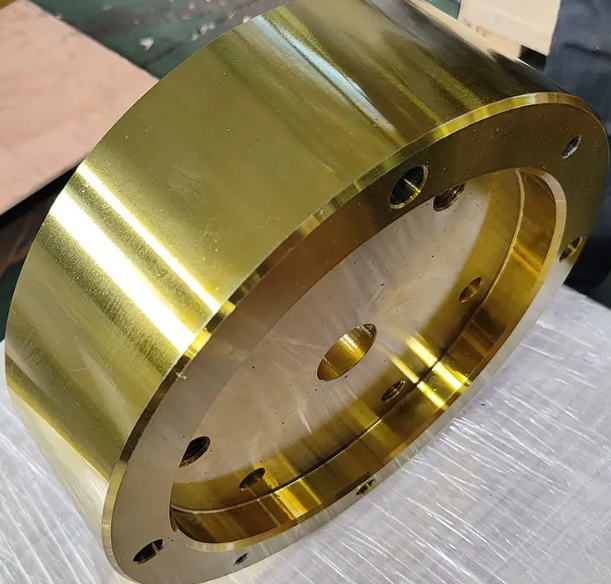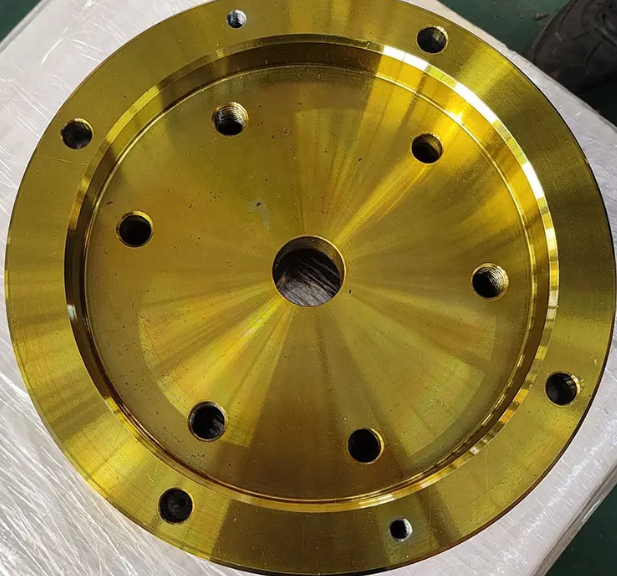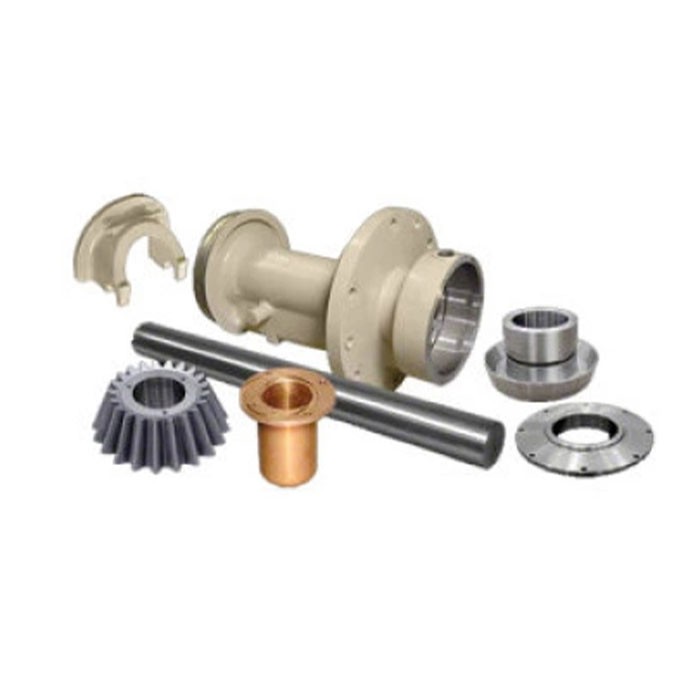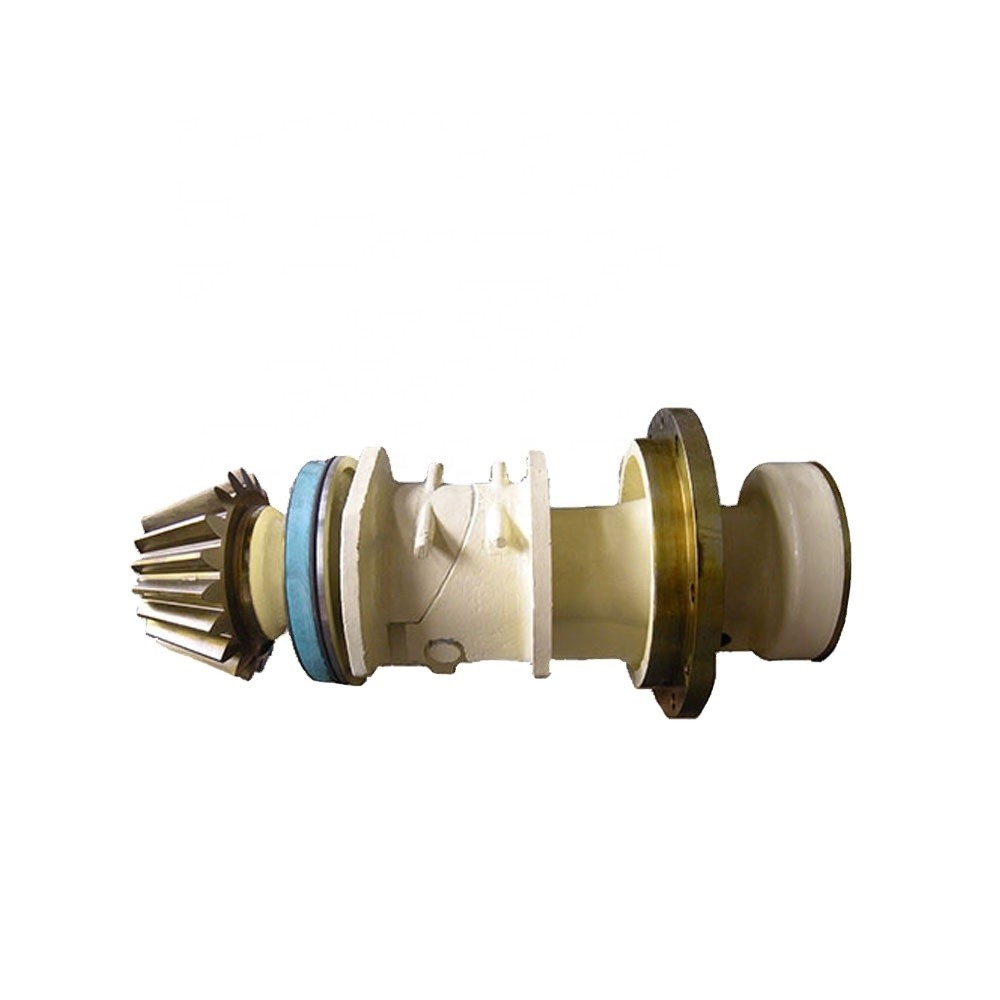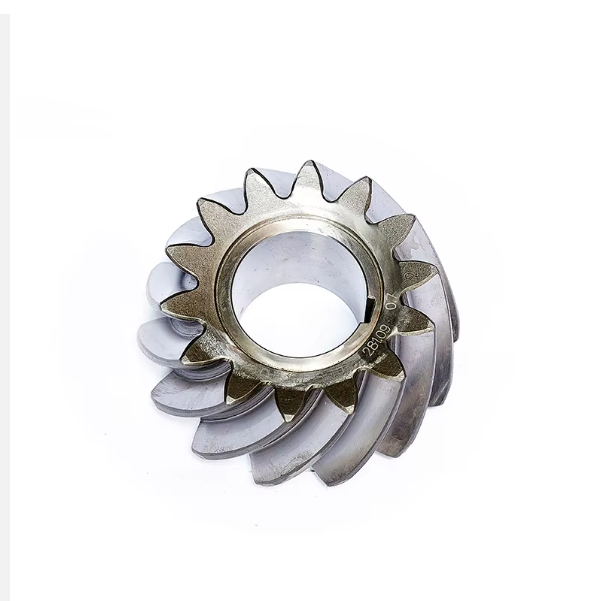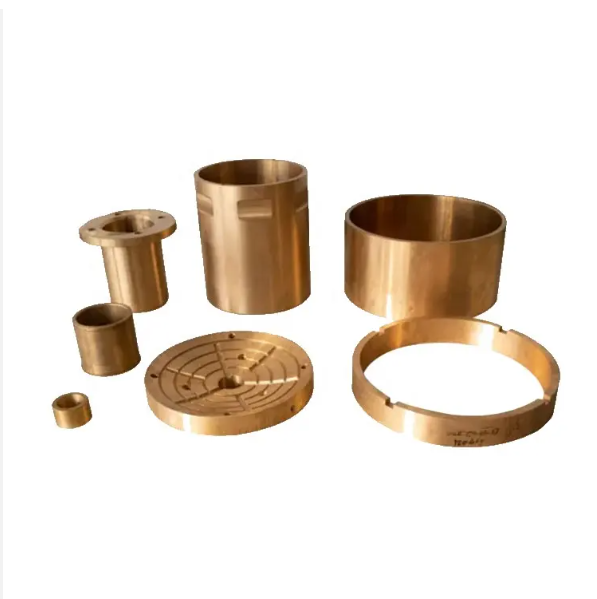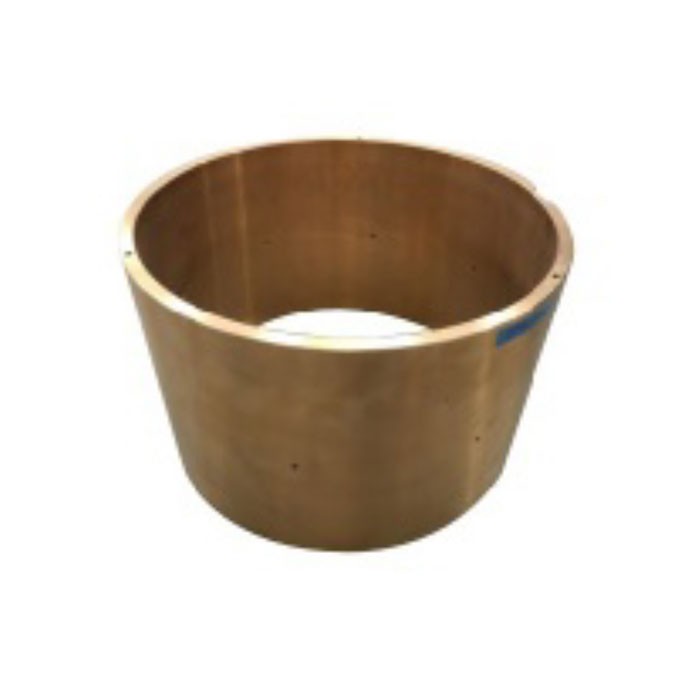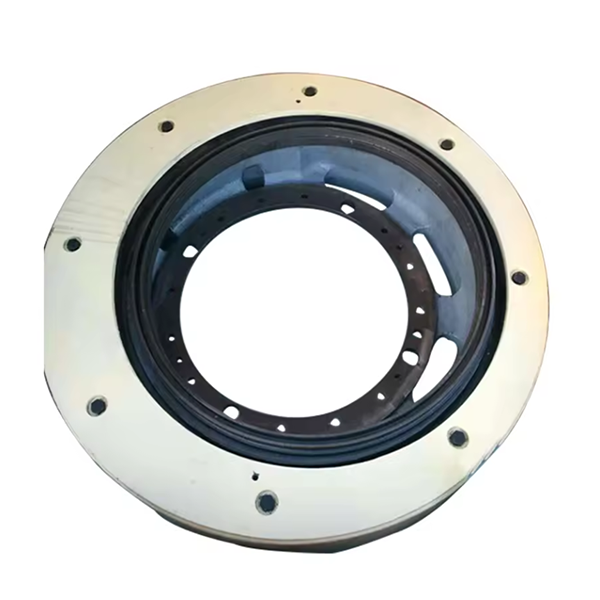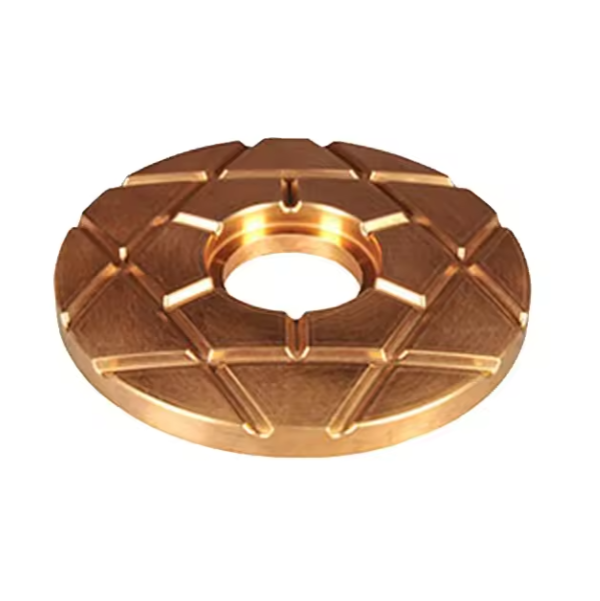1. What is a the multi-cylinder hydraulic cone crusher socket?
The the hp cone crusher socket is installed on the upper part of the eccentric sleeve of the cone crusher is called the bowl shaft upper frame.
2. The role of multi-cylinder hydraulic cone crusher socket
a. Fix the bowl tile through the upper part of the HP series cone crusher socket
b. The bowl-shaped bearing supports the crushing part.
c. Adjust the cone machine speed problem by adjusting the thickness of the gasket of the bowl shaft upper frame.
3. Precautions for the use of multi-cylinder hydraulic cone crusher socket
a. In hot areas, water cooling and air cooling with bowl shaft upper frame are more suitable during installation.
b. Air cooling is more suitable for cone crushers installed in cold areas.
c. Make replacement judgments based on the degree of wear of the bowl-shaped tile to prevent damage to the bowl shaft upper frame.
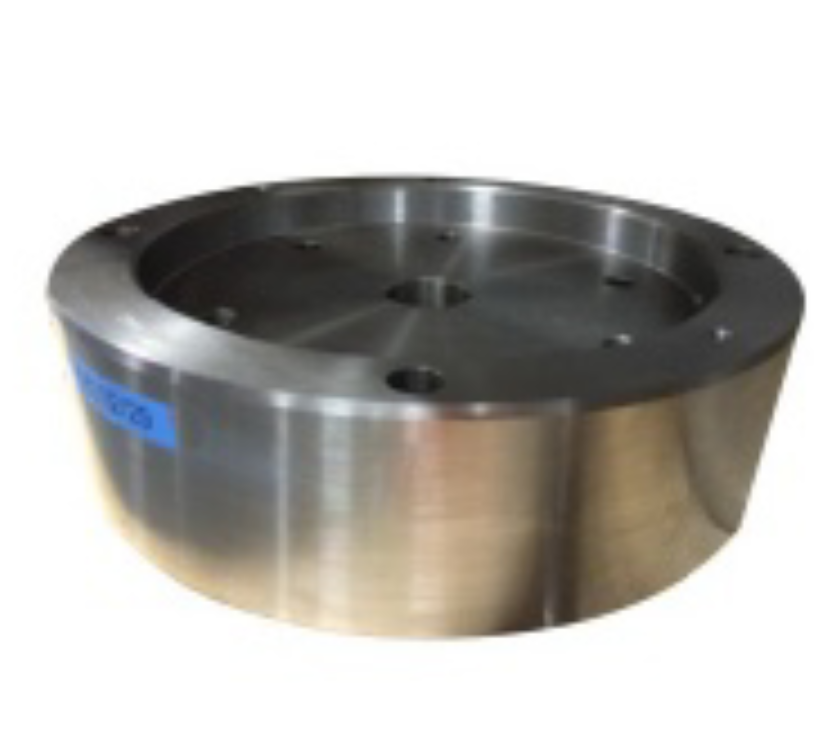
The bowl-shaped tile support of the cone crusher is an important component in the cone crusher. The following is a detailed introduction and general manufacturing process for it:
**Detailed Introduction**:
The bowl-shaped tile support mainly plays the role of supporting and fixing the bowl-shaped tile. The bowl-shaped tile then carries the body part of the cone crusher. During the operation of the crusher, the body part rotates and swings on the bowl-shaped tile. The bowl-shaped tile support is installed on the machine base, and its quality and performance are crucial for the stable operation of the crusher.
It needs to have sufficient strength and rigidity to withstand the huge pressure and vibration generated during the operation of the crusher. At the same time, in order to ensure the normal operation of the bowl-shaped tile, the fitting accuracy between the support and the bowl-shaped tile is relatively high.
**Manufacturing Process**:
1. Design and material selection: According to the specifications and working requirements of the cone crusher, design the bowl-shaped tile support. When selecting materials, usually consider high-strength and wear-resistant materials to ensure its service life.
2. Casting or processing blanks: According to the selected material, use casting or mechanical processing methods to manufacture blank parts. Casting can obtain a relatively complex shape, but may require subsequent processing to meet the accuracy requirements; mechanical processing can directly obtain blanks with higher precision.
3. Precise processing: Perform various mechanical processing on the blank, such as turning, milling, grinding, etc., to achieve the designed size, shape and surface accuracy. This includes processing installation surfaces, connection holes, etc.
4. Surface treatment: Perform appropriate surface treatment to improve wear resistance, corrosion resistance and other properties. For example, perform heat treatment such as quenching and carburizing, or perform surface coating treatment.
5. Quality inspection: Conduct strict quality inspection on the manufactured bowl-shaped tile support, including dimensional accuracy inspection, flaw detection, etc., to ensure that it has no defects and meets the design requirements.
6. Assembly verification: Verify in the actual assembly environment to ensure that the bowl-shaped tile support can precisely fit with other components (such as bowl-shaped tiles, crusher base, etc.) to ensure the normal operation of the crusher.
In the actual manufacturing process, the specific process steps and parameters may vary depending on the manufacturer, equipment conditions and product requirements. In order to ensure the quality and performance of the bowl-shaped tile support, the process quality of each link needs to be strictly controlled during the manufacturing process. At the same time, attention should also be paid to the fitting gap between the support and the bowl-shaped tile. This is an important technical difficulty. Too large or too small a gap may cause abnormal operation of the bowl-shaped tile and even lead to equipment failure.
Here is some supplementary information about the bowl-shaped bearing bush. The bearing bush is an important part installed on the bowl-shaped tile support:
The bowl-shaped bearing bush (also called lining tile, bowl-shaped tile) is a very critical copper fitting at a key part in the cone crusher. Its functions include: reducing the sliding friction force of the equipment during operation and reducing power loss; greatly increasing the service life of the wear-resistant parts of the cone crusher, reducing maintenance and repair costs, and striving for higher equipment utilization; effectively protecting the steel parts in contact with it from wear. When the copper part is worn, it is easy to replace. The installation part is located on the periphery of the main shaft of the cone crusher, between the lower wall of the crushing wall and the upper wall of the bowl-shaped tile bracket, and it is under very high pressure. Its material and size requirements are relatively high. In particular, the fitting gap between it and the bowl-shaped tile bracket and the crushing wall is the most important technical difficulty. Due to manufacturing and installation errors, it is easy to cause cracks or even crushing of the bowl-shaped bearing bush during operation, resulting in serious equipment accidents. Therefore, choosing a bowl-shaped bearing bush with guaranteed material and processing size is the key to whether the equipment can operate normally. The bowl-shaped bearing bush wears frequently and often needs to be replaced.
The specific manufacturing method of a bowl-shaped bearing bush for a crusher is as follows (referring to patent content):
This bowl-shaped bearing bush includes a bowl-shaped body. The top surface of the middle part of the body is provided with a shaft hole, and the bottom surface of the middle part is provided with an extension shaft sleeve extending vertically downward along the side wall of the shaft hole, which is convenient for subsequent installation; the inner side wall of the middle part is provided with an annular groove, which can store oil and prevent excess oil from overflowing from the top of the body. The bottom surface of the annular groove is provided with a plurality of oil return through holes, and a filter screen is provided in the oil return through hole to play the role of filtering impurities and ensure the purity of the lubricating oil and prevent the oil return through hole from being blocked. The filter screen is composed of an integrated corrugated sheet. Adjacent corrugated sheets are in contact with each other to form a number of filter holes, and the corrugated sheet is provided with a crease edge, which divides the corrugated sheet into several equal-length corrugated sections; the corrugated sections start from one side of the corrugated sheet along the crease edge and are folded in sequence in the order of 180° clockwise and 180° counterclockwise, and then are pressed and shaped by a machine to form a filter screen, and the surface of the filter screen is honeycomb-shaped. This filter screen prepared by folding can well shape the filter screen, effectively avoid the defect of the filter screen being soft due to the misalignment of the corrugated sheets, and also play a good filtering effect. In addition, a wear-resistant layer is provided outside the body, thereby reducing wear and improving service life.
The inner side wall of the body above the annular groove is provided with an upwardly protruding annular raised support part, and the inner side wall of the body above it is provided with an upper annular groove. During operation, the bowl-shaped bearing bush is installed on the bowl-shaped support frame, and the lower part of the crushing cone body is pressed against the inner side wall of the bowl-shaped bearing bush for rotation. The annular raised support part is directly in contact with and rubs against the lower wall surface of the crushing cone body. Its thickness is relatively thick, so that the supporting force is large and will not break. The upper annular groove can also store oil to prevent excess oil from overflowing from the top of the body. The oil return through hole passes through the outer side wall of the body, and its diameter is equal to the width of the annular groove, so that the oil in the annular groove can be refluxed for convenient reuse. The side wall of the extension shaft sleeve is provided with a plurality of positioning pin holes, and the inner side wall of the neck of the body is provided with a plurality of positioning holes, which are convenient for subsequent installation and positioning. The wear-resistant layer is a high-strength alloy composite layer. A surfacing layer is provided between the wear-resistant layer and the body. The surfacing layer is made of wear-resistant welding wire by surfacing. The components and their weight percentages contained in the wear-resistant layer are: 25.00%-55.00% chromium, 3.00%-8.00% carbon, 0.50%-4.00% manganese, 0.10%-3.00% silicon, 0.25%-3.00% nickel, 0.25%-3.00% molybdenum, 0.10%-1.50% vanadium, and the balance is iron and unavoidable impurities. The components and their weight percentages contained in the surfacing layer are: 15.00%-35.00% chromium, 3.00%-6.00% carbon, 0.50%-3.00% manganese, 0.20%-2.00% titanium, 0.50%-1.50% boron, 0.50%-1.50% vanadium, 0.15%-0.55% nickel, 0.10%-0.50% niobium, and the balance is iron and unavoidable impurities. Melting the surfacing layer between the body and the wear-resistant layer, on the one hand, increases the wear resistance; on the other hand, between the body, the surfacing layer and the wear-resistant layer forms a "sandwich bread" structure. The surfacing layer plays the role of a bridge for hot-melt bonding the body and the wear-resistant layer. The three are fused and combined into one through heat treatment. While increasing the thickness of the composite layer, the outside of the body is covered with a double-layer wear-resistant protective layer, improving the structural strength.

